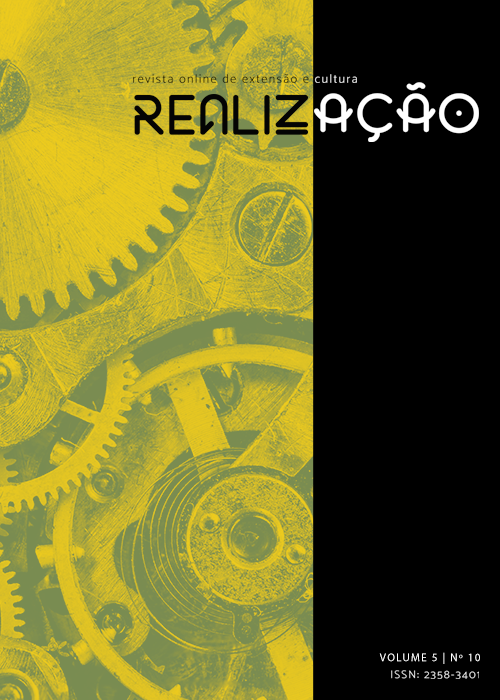Gravimetric characterization of solid waste before and after the “adopt a mug” program in an administrative establishment in the municipality of Iguatemi, MS
DOI:
https://doi.org/10.30612/re-ufgd.v5i10.8621Keywords:
Gravimetry , Solid waste , Mug adoptionAbstract
One of the biggest challenges faced by municipalities is the selective collection of solid waste, as well as its proper final disposal in accordance with environmental legislation, due to the lack of awareness among the population about the importance of separating and recycling waste. The objective of this study was to analyze the composition and gravimetric characterization of solid waste. The study was carried out in an indigenous health administration establishment, located in the municipality of Iguatemi, in the state of Mato Grosso do Sul. Collection was carried out over 5 days (Monday to Friday). During the initial characterization of the waste, it was observed that the establishment generates organic matter (4.46 kg), represented by coffee grounds, fruit peels and pulp, metals (0.76 kg), from aluminum packaging and staples, paper (6.13 kg) and plastics (9.78 kg), from various packaging and plastic cups. After this analysis, the “Adopt a Mug” program was implemented, in which employees of the establishment were encouraged to adopt a mug made of durable material instead of using plastic cups. A new collection was then carried out, and a significant reduction in the amount of plastic generated within the establishment (5.82 kg) was observed, totaling a reduction of 59% in relation to the values prior to the creation of the program. Through this work, it can be concluded that the implementation of the “Adopt a Mug” program was effective in reducing the use of plastic cups, as employees identified with the issue and actively participated in the campaign.
Downloads
References
ABNT - ASSOCIAÇÃO BRASILEIRA DE NORMAS E TÉCNICAS. NBR 10.004: resíduos sólidos - classificação. Rio de Janeiro, 2004.
ALVES, C.; SOUZA, A. G.; ANDRUCHAK, M. A.; FERNANDES, D. M.; N. BARRETO, T. H. D. Estratégias de Eco-Feed Back Orientadas Para a Não Geração de Resíduos Sólidos Urbanos. Anais do II SINGEP e I S2IS - São Paulo - Brasil. 2013.
BRINGHENTI, J. Coleta seletiva de resíduos sólidos urbanos: aspectos operacionais e da participação da população. Tese (Doutorado em Saúde Ambiental) - Faculdade de Saúde Pública da Universidade de São Paulo, São Paulo, p. 234, 2004.
IBGE - Instituto Brasileiro de Geografia e Estatística. Mato Grosso do Sul, Iguatemi. 2016. Disponível em: < http://cidades.ibge.gov.br/xtras/perfil.php?codmun=500430>. Acessado em: 05 jun 2017.
LEÃO, A. L. Recursos Naturais Renováveis. São Paulo: CETESB, p. 93. 1995.
PREFEITURA DE SÃO PAULO. Reelaboração participativa do plano de gestão integrada de resíduos sólidos – PGIRS. In: IV Conferência Municipal do Meio Ambiente, 2013.
Secretaria de Estado de Meio Ambiente, do Planejamento, da Ciência e Tecnologia. Plano Estadual de Resíduos Sólidos de Mato Grosso do Sul (PERS-MS). Campo Grande, MS, p. 47, 2014.
Downloads
Published
How to Cite
Issue
Section
License
Copyright (c) 2018 Thaís Tagliati Silva

This work is licensed under a Creative Commons Attribution-NonCommercial-ShareAlike 4.0 International License.
Autores que publicam nesta revista aceitam as normas de publicação, bem como, concordam com os seguintes termos:
(a) O Conselho Editorial se reserva ao direito de efetuar, nos originais, alterações da Língua portuguesa para se manter o padrão culto da língua, respeitando, porém, o estilo dos autores.
(b) Autores mantêm os direitos autorais e concedem à revista o direito de primeira publicação, com o trabalho simultaneamente licenciado sob a Creative Commons Atribuição-NãoComercial-CompartilhaIgual 4.0 Internacional que permite: Compartilhar — copiar e redistribuir o material em qualquer suporte ou formato e Adaptar — remixar, transformar, e criar a partir do material. A Creative Commons Atribuição-NãoComercial-CompartilhaIgual 4.0 Internacional considera os termos seguintes:
- Atribuição — Você deve dar o crédito apropriado, prover um link para a licença e indicar se mudanças foram feitas. Você deve fazê-lo em qualquer circunstância razoável, mas de nenhuma maneira que sugira que o licenciante apoia você ou o seu uso.
- NãoComercial — Você não pode usar o material para fins comerciais.
- CompartilhaIgual — Se você remixar, transformar, ou criar a partir do material, tem de distribuir as suas contribuições sob a mesma licença que o original.
- Sem restrições adicionais — Você não pode aplicar termos jurídicos ou medidas de caráter tecnológico que restrinjam legalmente outros de fazerem algo que a licença permita.


